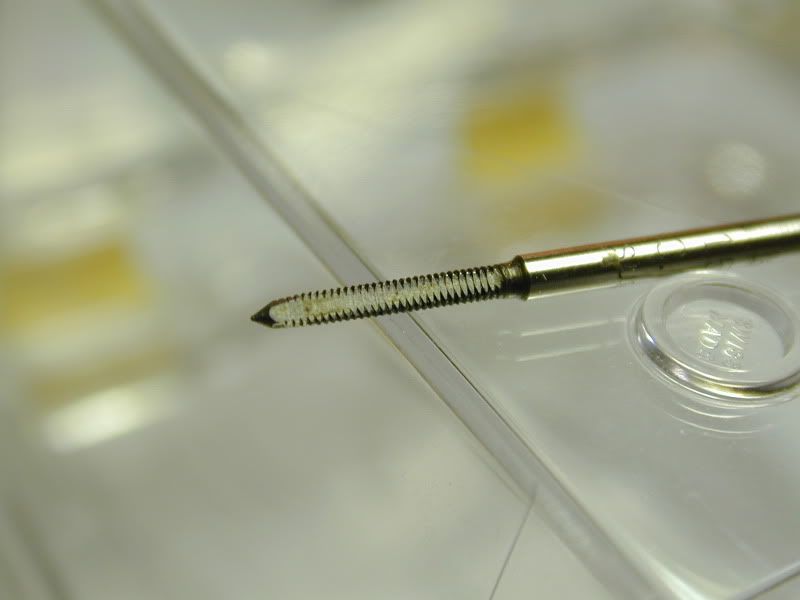As said,Conrad,I have made acme taps. I caution you to not make the taps ANY LONGER than needed to tap the hole. Even HSS acme taps are easy to break if used too hard,and they USED to come in sets of 3,to gradually enlarge the hole. At least,I have some old ones that are like that.So,do use caution. Draw them to purple.
To get the most accurately square holes with these old style taps,I drill the holes in the lathe,and tap them in the lathe if possible.
One last remark: I don't even strive to grind the 4 ,or 3 flats on center. If just 1 corner cuts,thy have done just fine,and I haven't made them for producing lots of tapped holes anyway. Most of my taps haven't even got a hollow grind. I just hit them on the belt grinder. If I feel I need to,I might hone them sharper afterwards. Usually I don't even do that. I WOULD HONE THE ACME TAPS.They have a much greater amount of metal to remove.
I think you'd be best off grinding a 1 sided cutting edge as I did for my lathe tailstock quill,which was tapped into steel. Grind just the same as you did for the 4 sides tap,letting the 1 side taper out pretty quickly,say,in 1 1/2 diameters of the tap. Then,grind the end of the tap to below minor diameter,and rotate the tap,grinding ever deeper as you go around,to provide clearance. I say this because I think this tap style has a better,more acute cutting edge.
I don't know what steel,or how deep you intend to tap,but it might be a good idea to make 2 taps with the same MINOR diameter,but with the first tap cutting perhaps 1/2 the full thread depth. Then,of course,you will have to feel your way into the first thread when you use the 2nd. tap.
I'm not sure making the taper of your tap longer would be good or not. You still end up cutting just as much metal away when tapping anyway,but the tap would be longer,and prone to twist more and snap off.
I had made a pair of acme taps about 1" diameter to make new nuts for a milling machine's leadscrews. I had cut flutes in these just with the corner of an end mill,to make 4 flutes. I wound up not needing the mill and sold it along with the taps. The person has not yet gotten into making the new nuts,though. These taps would have been relief ground just like commercial taps,except the flutes were not circular.
I advise you to test your acme taps on something unimportant before you use them for the real part where you've invested a lot of work. Good luck!!!





